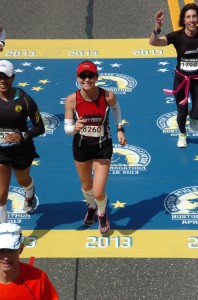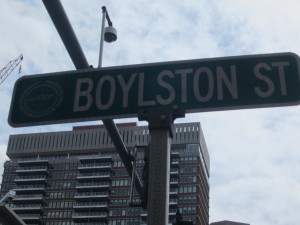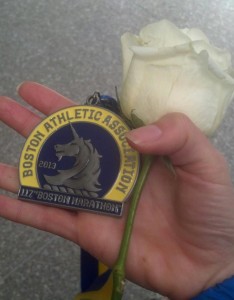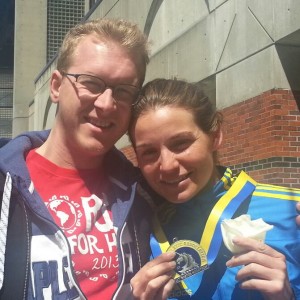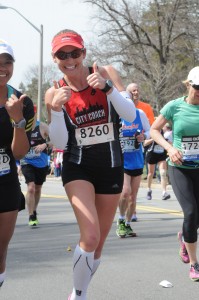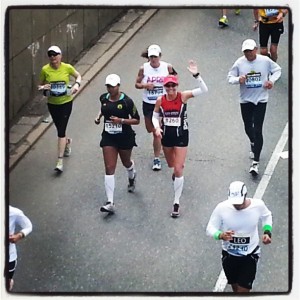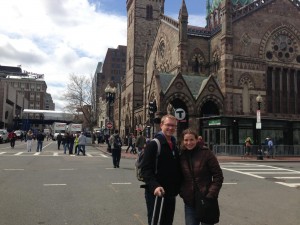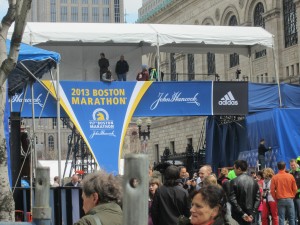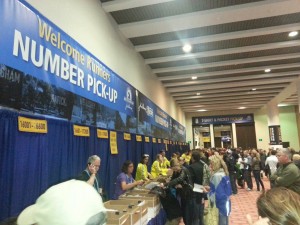Runners and fitness enthusiasts, in general, are overachievers and type-A personalities. After all, these road and trail warriors sign up for races months in advance and stick religiously to a training schedule. Freezing cold? They’ll bundle up. Raining cats and dogs? They’ll embrace the soggy shoes and enjoy skipping through puddles. Gym crowded after work? They’ll come back and 10pm to get that quality arm day in.
This dedication is what makes these overachiever type-A’s successful at achieving their goals – whatever they may be.
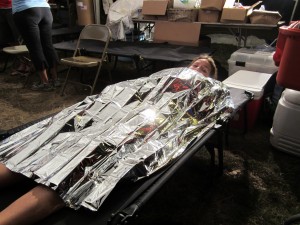
Medical Tent, after 68 miles of the Lone Ranger Ultra Marathon. Athletes push when they shouldn’t. Myself included.
The downside to this driven, dedicated personality is that often that person doesn’t know when all signs point toward a rest day. Often the scheduled workout on the calendar trumps an achy knee, a head cold, or a sleepless night.
When should we suck it up and power through and when should we take some quality time off? The answer isn’t always simple. There are lots of factors, like how close are you to race day, a fitness competition, etc.
Things you can probably power through: sore muscles (not INJURED, but sore), lack of sleep, less than ideal weather. Being sore is part of the process while getting in shape, so you cannot take time off every time something hurts. Having a “easy” workout the day after a hard one is best. Lack of sleep makes motivation hard, but as soon as you get moving, your body and mind will wake up. Just budget some time to catch up on sleep. The weather on race day is completely unpredictable, so you need to get your body and mind used to the demands different climates offer. Unless there is thunder and lightning, lace up.
Things you should NOT power through: a nagging injury (unless you have seen a Doctor and been given the okay), serious illness (stomach flu, high fever, strep throat, etc.). Unless you have seen a doctor (a SPORTS DOCTOR), you do not know what is wrong with you. Yes, the internet has a ton of information out there, but how can you assume your self-diagnosis is accurate? Once you see a doctor, you will be told whether or not you can continue training or need to take time off. LISTEN to your doctor. If you are ill, you may want to push through. Most often, this is a TERRIBLE idea. Why would you power through a workout with a high fever or stomach flu? What benefit will come from this training? Another way to think of it, what damage could this workout do? You’ll recover best while resting, and powering through a workout today, while ill, may mean having to take off more days in the future.
The tricky area: when you feel a cold coming on, or are on the road to recovery from being sick, or have a strange pain that is new and not too bad, etc. If you choose to train on one of these days, don’t do a hard workout – even if your training plan says otherwise. Switch out that hard tempo run with an easy “recovery” pace run, or don’t move up the weights at the gym if you were planning on doing so. Go into the workout with the acceptance that you may need to bail out of the workout early, and that’s okay.
At the end of the day, you need to remember to be smart. Your training calendar is created assuming everyday you are in optimal health, and working under optimal conditions. Life isn’t always optimal.
Remember, by the time you toe the line for a race, or hit that goal beach vacation, missing a few workouts here or there are not going to hurt your potential on race day. Showing up to the race under the weather, injured, or simply burnt out certainly will.
